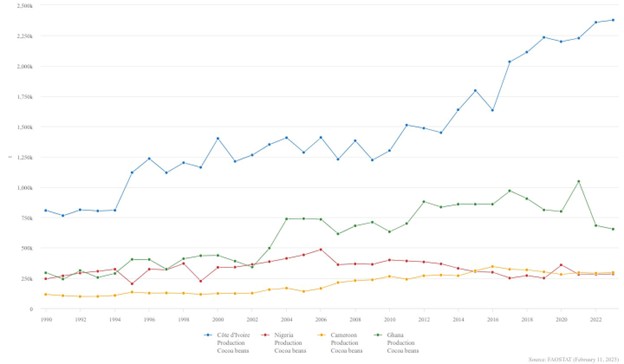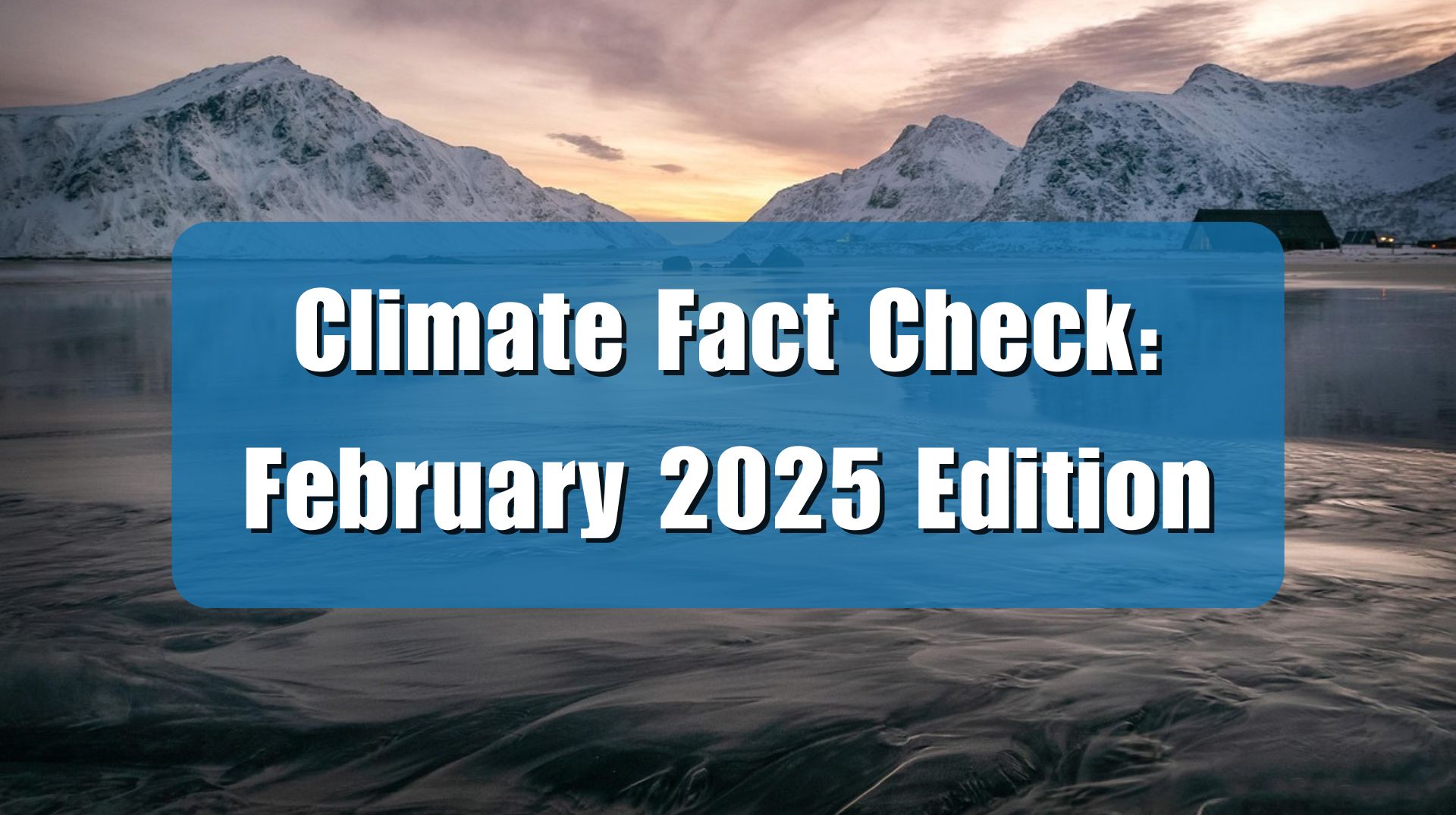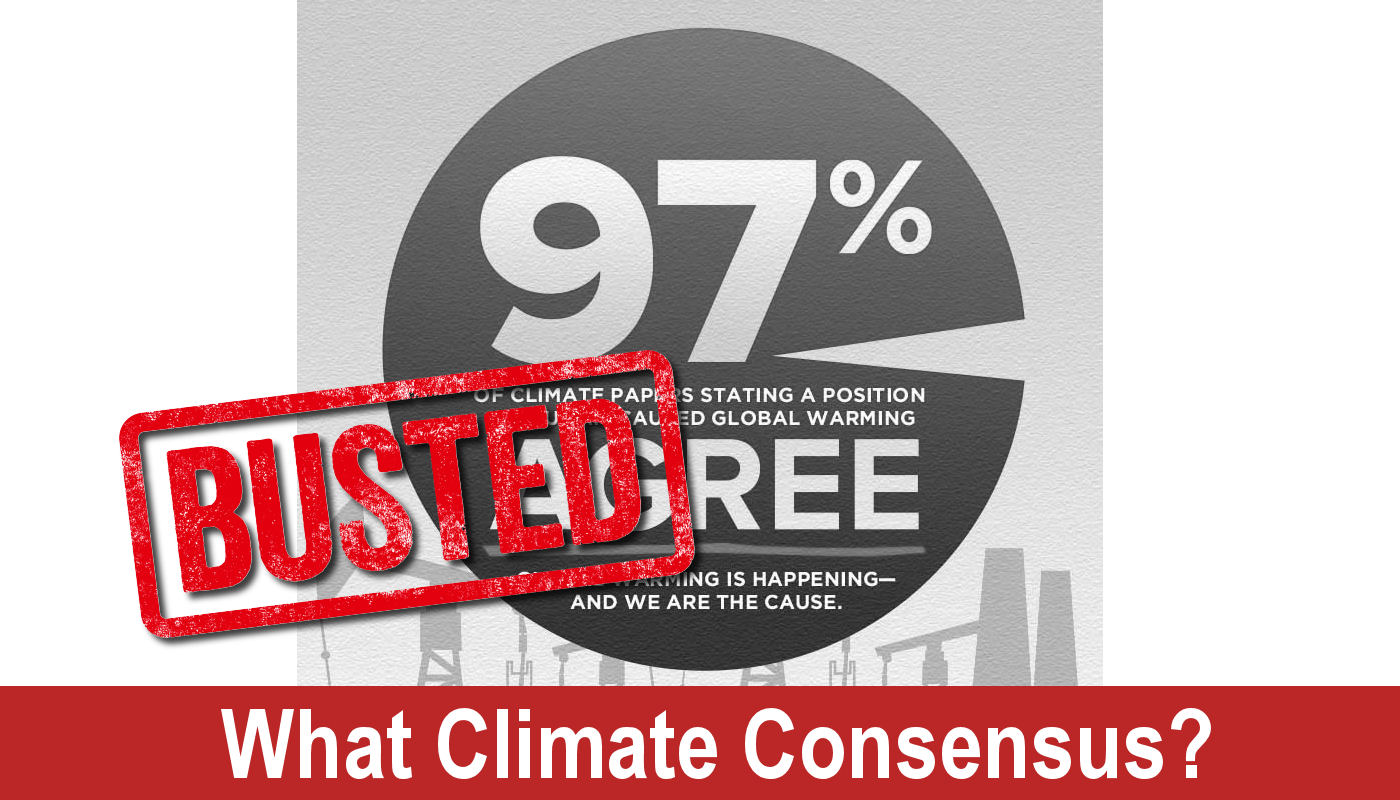Earth.com published a story claiming climate change is causing cocoa production to fall in West and Central Africa. This is false. Data show that cocoa production has increased during the last few decades of modest warming, rather than falling. Part of the reason for this is improved growing conditions in those regions and carbon dioxide fertilization.
In the Earth.com story, “Cocoa production in Africa is under extreme climate pressure,” writer Andrei Ionescu, references a study published in Agricultural and Forest Meteorology, which claims that climate change may result in a 50 percent drop in production across West and Central Africa, a region which accounts for 70 percent of global cocoa production. Ionescu goes further claiming, “Climate change is substantially affecting cocoa production in West and Central Africa.” The problem is the data falsifies this claim, and the projections are based on the worst-case scenario projections from flawed climate models.
Climate Realism and Climate at a Glance have written multiple times previously concerning the admission by climate modelers that the models run way to hot. Accordingly, projections of impacts dependent on the models and their high emission scenarios cannot be trusted. Neither scientific research nor public policies should be built upon assumptions and projections that are known to be fatally flawed.
Leaving this aside, data from the U.N. Food and Agriculture Organization show that, like crops everywhere, cocoa production varies from year. But accounting for interannual ups and downs, over the recent period of modest climate change, cocoa production has generally increased in West and Central Africa.
The research in particular focuses on cocoa production in Cameroon, the Ivory Coast (Côte d’Ivoire), Ghana, and Nigeria. FAO data for those countries show that since 1990:
- In Cameroon cocoa bean production has grown by more than 157 percent;
- In the Ivory Coast (Côte d’Ivoire) cocoa bean production increased by more than a 194 percent (nearly doubling, and setting a new record in 2023);
- In Ghana cocoa bean production expanded by just over 122 percent;
- And in Nigeria cocoa bean production grew by almost 17 percent.
Each of these countries experienced multiple years of record setting production over the past three and a half decades of climate change. (See the figure below).

With these facts in mind, there is no evidence whatsoever that climate change is putting cocoa production under extreme pressure, except perhaps in the imagination of Earth.com’s Ionescu.
Globally carbon dioxide has resulted in a general greening of the Earth with significantly improved crop production. There is good reason to believe that rising carbon dioxide concentrations have significantly contributed to West and Central Africa’s improved cocoa production, as well. There is no good reason found in botany, agronomy, or climatology – outside of climate model projections– for thinking growing conditions in the region will change for the worse.
Even the researchers themselves noted that under the various scenarios they projected, some areas in the region might see little or no change in yields going forward, others might see increased production, and still others decreases. In general, the “[r]esults from the mixed-effects models indicated that effects of climate variability on both and (with and without CO2, for all GCMs [general circulation models]) were not very strong, but that effects depended on the selected climate scenario.”
In fact, the study’s authors honestly admitted that as a result of a number of factors their findings were extremely uncertain. Among those limiting factors were the spatial scale of climate models, a lack of data availability, insufficient knowledge of potential land use changes, unknown interannual climate variability, and more. In addition, they acknowledged that the cocoa simulation model they used “has not been validated in the context of climate change or CO2 rise studies.”
These important admissions were entirely absent from Ionescu’s Earth.com story, which might lead one to believe there is more certainty in the projections than, in fact, there is.
Ionescu noted that the researchers said deforestation due to burgeoning populations expanding into tropical forests and land conversions could also result in a decline in cocoa production. This may be true, it has happened elsewhere for other forest dependent nuts and fruits when land was converted to row crops or urban expansion, but that has nothing to do with climate change.
In the end, the Earth.com story was long on alarming speculation pushing the catastrophic climate change narrative, and short on detailed analysis. The author showed no evidence of reading the report that he cites carefully and in full, or that if he did, that he understood its nuance and caveats related to its results – at least if he did, he didn’t discuss it in his story. There is also no evidence in the story that the writer checked any real-world data before asserting climate change is harming and will threaten cocoa production. That’s sloppy journalism any way you cut it.



















